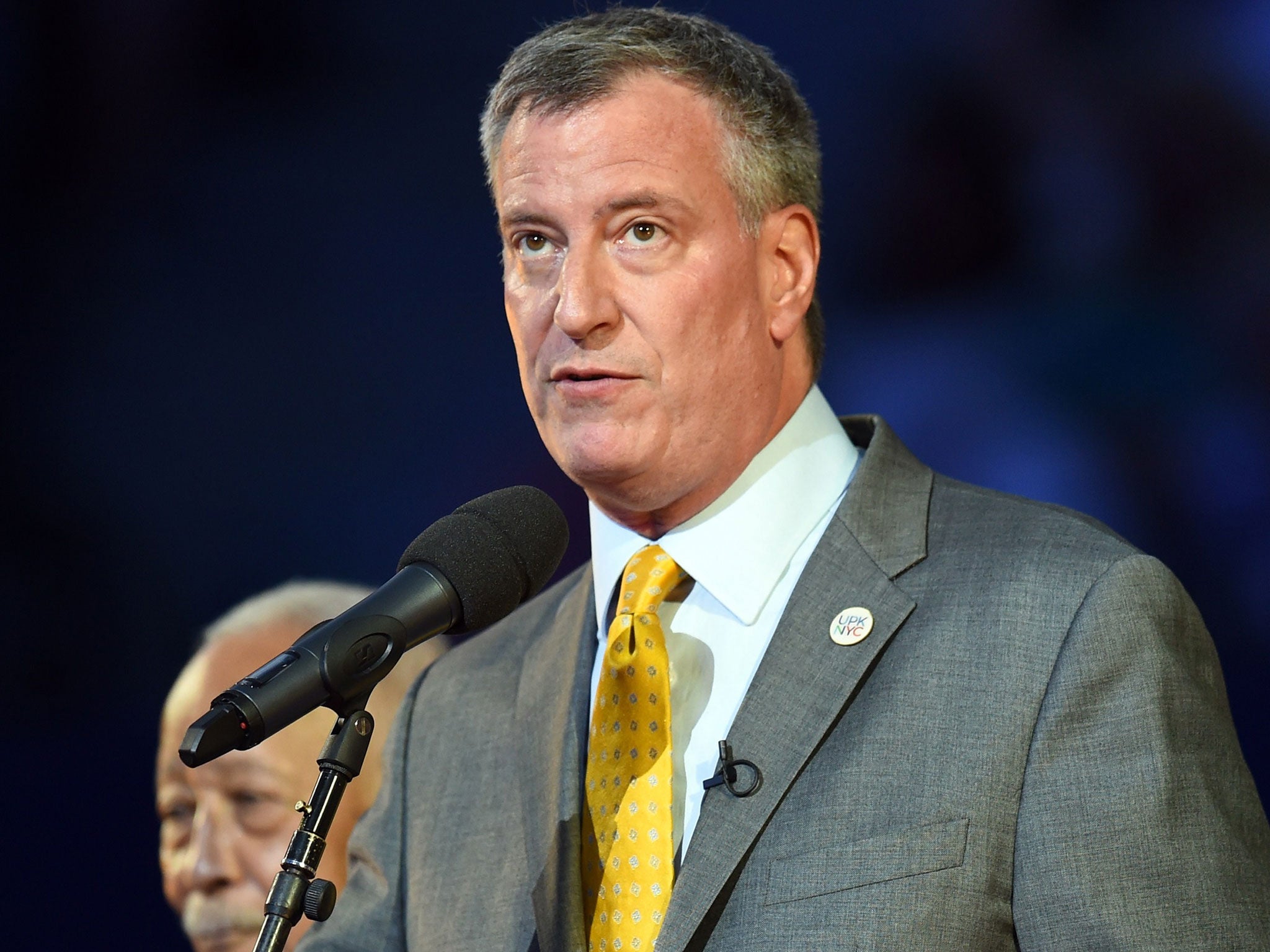New York mayor Bill de Blasio under pressure over 'poor doors'
New buildings increasingly built with separate entrances for rich and poor residents

Pressure continues to mount on Mayor Bill de Blasio, who took office less than a year ago on a promise to nudge New York City back towards its more egalitarian roots, to put an end to the so-called “poor doors” built into new residential buildings, which segregate rich owners from their not-so-rich renting neighbours.
This will be the arrangement at 40 Riverside Boulevard, a new development on the Upper West Side which is part luxury apartments with price tags rising to $20 million, and part affordable housing units that will rent for as little as $850 a month. Those buying will have Hudson River views and a flashy entrance with a doorman. The renters will have no river vistas - and they will also have to use a separate entrance.
Now nearly completed, the development has been the spark behind the poor door controversy that has been raging for most of the summer. It isn’t the only new residential building in New York, however, where a kind of entrance-rights apartheid has been established. Another is the Edge, a glassy tower on the waterfront in Brooklyn, which also has a mix of market-price luxury flats and low-income rentals
The practice is actually encouraged under regulations enacted by Mr De Blasio’s predecessor, Michael Bloomberg, that were designed to spur private developers to help the city overcome a shortage of affordable housing. Developers win zoning concessions and tax subsidies from the city if they include some affordable housing in new projects and provide separate entrances for those who occupy them.
There are deep divisions of opinion even among affordable housing advocates over whether banning the poor doors would actually be a good idea given that they have been important in making it palatable to private developers to include some quantity of affordable units in new luxury complexes.
However the visceral disgust that the poor doors continue to generate in some corners – an emotion clearly fed by a deeper fear that New York, and Manhattan in particular, is increasingly becoming a place for the very rich only and the rest of us might as well leave the island now – seems to be something that the de Blasio administration feels it can no longer ignore.
This was the message delivered to the New York Times this week. Alicia Glen, the deputy mayor for housing and economic development, said that a review would be taken forward this autumn and rules introduced banning separate entrances for poorer residents. “Walking into a building should not be any different based on income status,” Ms. Glen told the newspaper in an interview on its front page.
It remains to be seen if Mr de Blasio will also address other forms of discrimination in new mixed-income developments. At the Edge, for example, it isn’t only separate front doors that keep the rich and less rich residents apart, but also access to some of its amenities. Only owners of apartments are allowed to use its gym, for example. Those in its few low-income units are welcome to run along the river.
Join our commenting forum
Join thought-provoking conversations, follow other Independent readers and see their replies
Comments
Bookmark popover
Removed from bookmarks